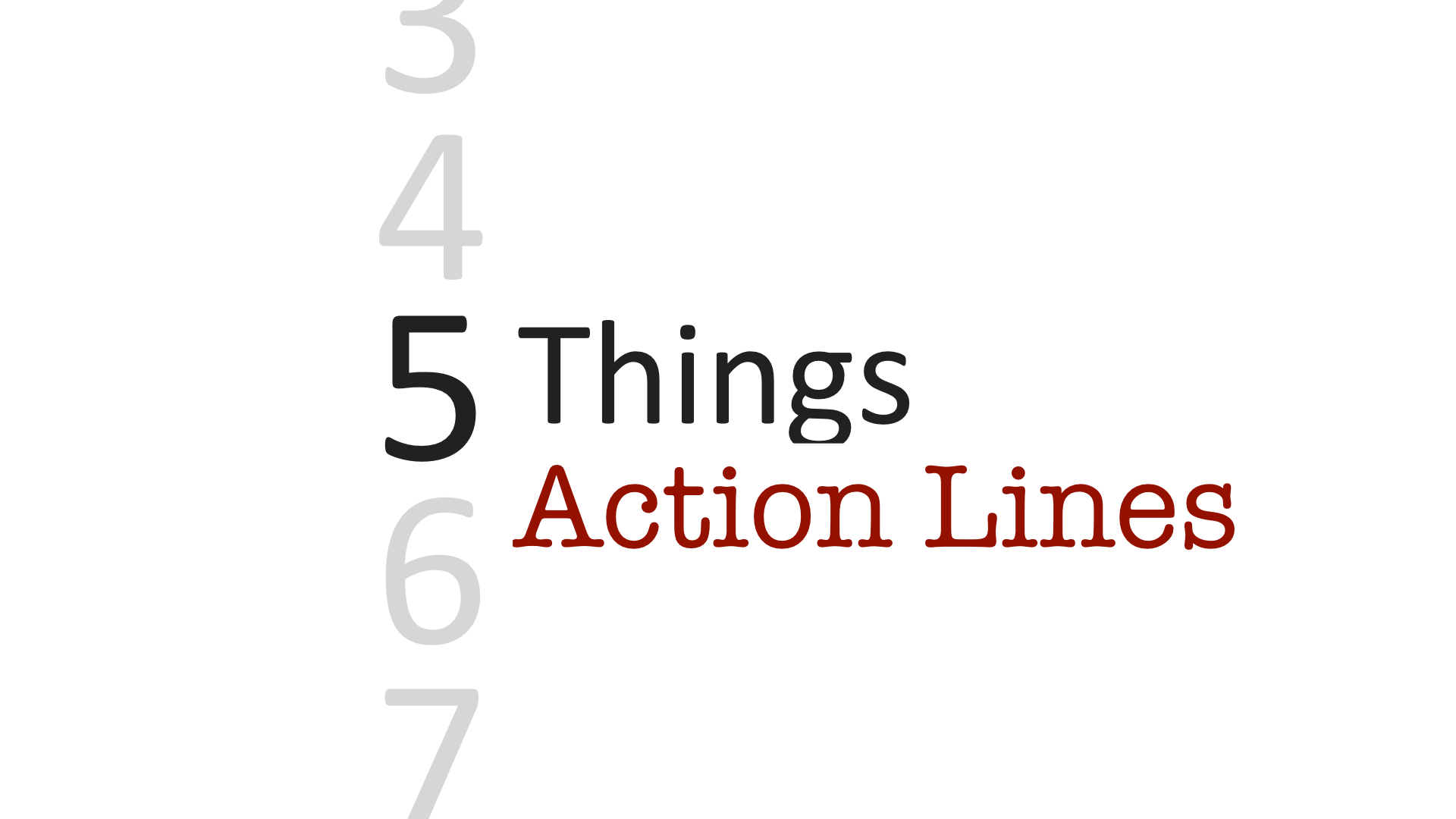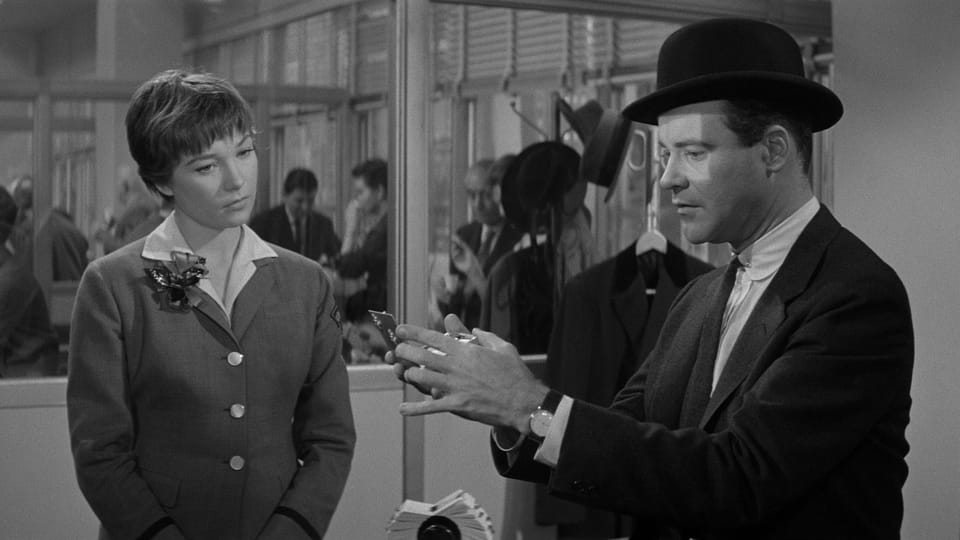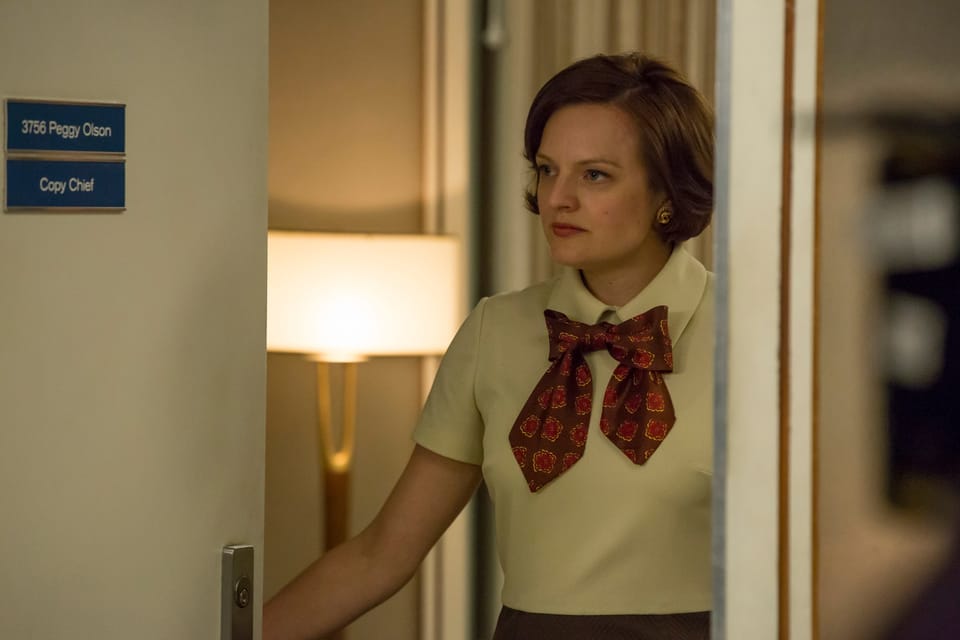5 simple ways to improve your action lines immediately.
You can take a giant leap in the readability of your action lines just by paying more attention to them. It's about committing to care about the little things.

The Story and Plot Weekly Email is published every Tuesday morning. Don't miss another one.
You will notice that there is nothing groundbreaking here. There are even a couple of things that your English teacher told you to do.
And that's the point.
This is not difficult in and of itself.
You can take a giant leap in the readability of your action lines just by paying more attention to them.
It's about making a commitment to care about the little things.
You can start with these:
1. Establish the first image.
Visually orient us as soon as possible. Readers often skip the scene heading and go straight to the first action.
It's hard to blame them; "EXT." and "INT." are ugly, disruptive, and clumsy to read. I use them as little as possible now.
This puts even more weight on the first action line in a scene. The longer you wait to solidify an image, the more variables you introduce that can make things go wrong.
Here is an example.
What's wrong with this? It's unexceptional, sure, but I want to focus on what we imagined when we read this and in what order.
If you're like me, you read this either as bare stage directions or a single shot of David that retroactively turned into a two-shot.
The former is boring, and the latter makes you distrust the writer.
Why? As the writer described David, it hinted at a more extended shot, solidifying a single of him in our head. But then... surprise! It's a medium two-shot.
You do not get credit for complicated sentences. Simplicity and clarity are better.
The better choice? Maybe something like this.
I prefer this because the first thing it does is establish an image, "David and Gretchen sit at a small table across from each other."
A simple and direct sentence. No diversions, no distractions.
Everything we add is in addition to us seeing that scene in our mind. It's the base we work from and makes everything easier for the reader. We reduce the chance the reader will get visually lost.
The downside is that it's longer, but I would argue that feeling more like a movie and hearing our voice makes it worth it in this case.
2. Action first.
This has a similar vibe as the opening image, only now we are focused on action in the scene. The audience notices movement first. If we are trying to evoke the emotional experience of the movie, we want to duplicate that in the read.
That means:
- Explain the action.
- Give us the meaning of the action.
This is the exact same order we would perceive this information if we were watching the movie.
The audience concludes that Burke is not inclined to discuss his private life by the grunt. So, the grunt needs to come first.
It's small. It feels petty, but if we confused the order it reminds us we're reading a document rather than watching a movie.
Write your screenplay one moment at a time, in the order the moments come.
3. Avoid gerunds.
I am including the more expansive definition that includes present participles. I continue to be confused by English grammar, so for simplicity's sake, let's say the forms of verbs that end in "-ing."
In practice, this means:
- Eddie and Steve fight > Eddie and Steve are fighting.
- Eddie clobbers Steve > Eddie is clobbering Steve.
- Steve cries > Steve is crying.
Why does this matter? Why take the time?
We're just looking for more energy. That's all. One form is more active than the other.
One feels more confident. It's really that simple.
Would a gerund here or there make any difference to anyone?
No.
Would their constant use make a difference over 100 pages?
Absolutely.
Lazy, low-energy screenwriting takes a toll on the reader's experience. Timidity is a bore. And those of us who write this way tend to write this way habitually.
I broke myself of this habit by searching for every "-ing" in my script! CMD-F, baby!
I would review every single one and decide if it was what I wanted to use.
Sometimes it was, but most of the time it wasn't, so I would make the change.
This is important: The goal is not to remove this usage entirely -- sometimes, it's exactly what we want.
The goal is to stop writing them out of habit and use them only with intentionality.
4. Strive for better verbs rather than adverbs.
There is nothing wrong with an adverb in and of itself. I am mostly referencing what I call lazy adverbs.
That is, an adverb that modifies a simple verb when a more precise verb would have been better.
- Angie tumbles > Angie helplessly falls.
- Angie races up the stairs > Angie runs quickly up the stairs.
- Steve sobs > Steve cries uncontrollably.
Again, this is just better writing.
This was another habit I broke with CMD-F. This time, looking for "ly."
Of course, there are plenty of times when an adverb is precisely what we want. But make it intentional and not out of laziness.
5. Remove this habitual phrase.
For some reason, we write "starts to" a whole bunch. I don't know why we do, but it is a go-to way for many of us to launch an action.
- Eddie and Steve fight > Eddie and Steve start to fight >
- Eddie clobbers Steve > Eddie begins to clobber Steve.
- Steve cries > Steve starts to cry.
I will use "starts to" or "begins to" when the act is immediately interrupted, but for the most part, it dilutes our energy while gaining nothing.
Best to get rid of it, unless you know exactly why it's the best choice.
--
Yes, these are little things. But the little things matter because all the little things add up.
Of course, none of this can make a bad story good. But it can make a great story easier to identify.
And that's the goal. Write with more energy, confidence, and clarity to transfer your love and enthusiasm for the project to the reader.
These are five ways to get closer to that.
The Story and Plot Weekly Email is published every Tuesday morning. Don't miss another one.
When you're ready, these are ways I can help you:
WORK WITH ME 1:1
1-on-1 Coaching | Screenplay Consultation
TAKE A COURSE
Mastering Structure | Idea To Outline




